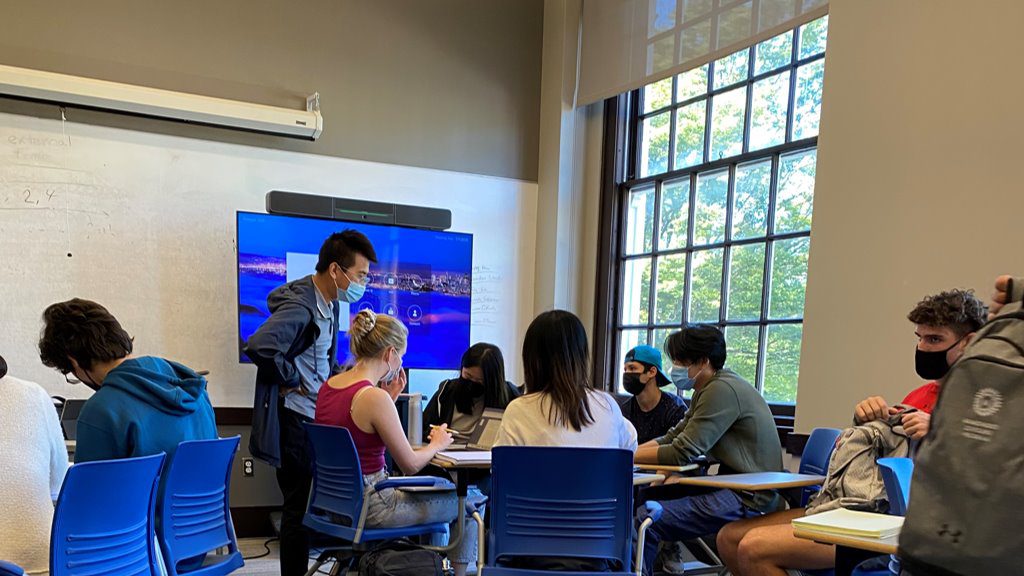Mathematics 106 and 107

Writing to apply mathematical concepts in the Calculus sequence for biological and social sciences
In Precalculus, Calculus I, and Calculus II for the biological and social sciences, developed by Associate Teaching Professor Emily Braley, students complete writing assignments that require them to demonstrate their understanding of concepts and apply mathematical skills to varied real-world scenarios. In Project 1 for Calculus 1, students draft a legal argument including mathematical analysis of the concentration of a drug in a patient’s blood over time for use in a malpractice lawsuit. In this case, the audience is the judge hearing the case. In Project 4, they design a textbook problem to illustrate a concept they investigated in their group work, and then exchange problems with a partner to solve; here the audience is other students in the same class.
In Calculus II, the assignments grow in complexity. In Project 2, students model epidemiological data on flu infections and create a report to share the model with another team of researchers anticipating the spread of the same flu strain in their region. In each of these assignments, students must consider the needs of each audience—for example, how much detail will be needed—as they respond to each scenario, building rhetorical awareness as well as fluency with course content.
Writing to develop learning strategies
The courses also includes writing assignments that ask students to reflect on their preparation and performance on quizzes and practice quizzes (“quiz wrappers“), building metacognition. Students are asked to correct problems they got wrong, identify the type of error involved, and devise strategies for avoiding this type of error in the future. They may also be asked to discuss the strategies they used to prepare, assess the helpfulness of various class resources, activities, and assignments in building their understanding of the topic, identify learning goals associated with quiz questions, give advice to future students in the course, identify resources that they have not yet made use of, create a goal for the next assignment, and share their action plan with a friend, family member, or classmate for accountability.
Students are asked to periodically submit a selection of their short individual writing assignments for assessment as part of a portfolio. Each individual writing task is preceded by similar problems that students work on in groups, so they have the opportunity to learn from each other and practice the relevant skills prior to working on their own. A peer review and read-aloud exercise before the portfolios are due encourages them to revise their work. Emily reports that the quality of students’ feedback was greatly improved when students were prepped for the peer review with a practice review of student work from previous semesters.
